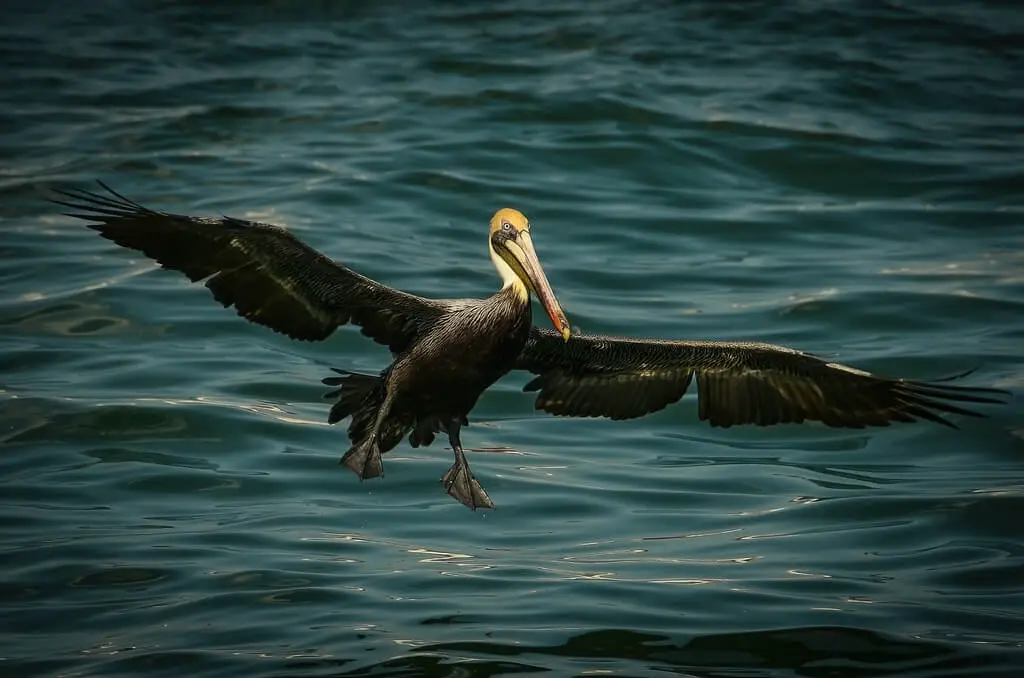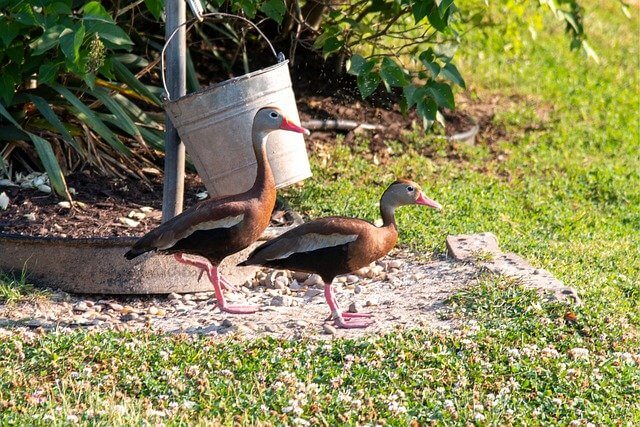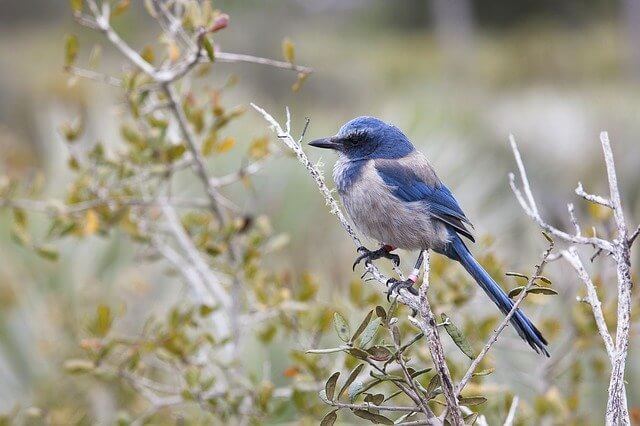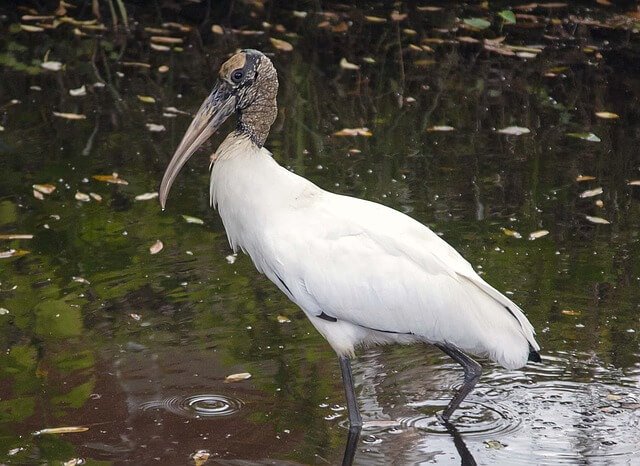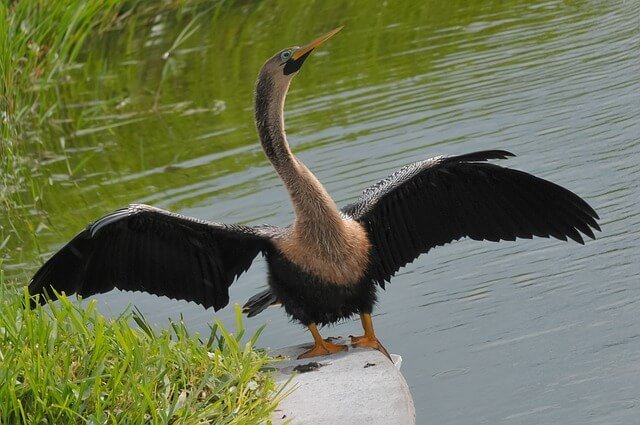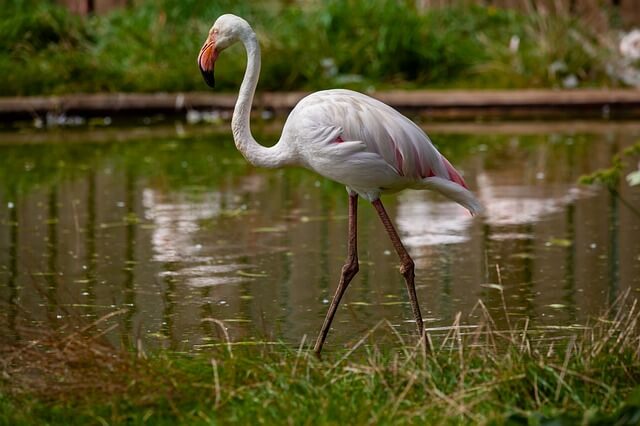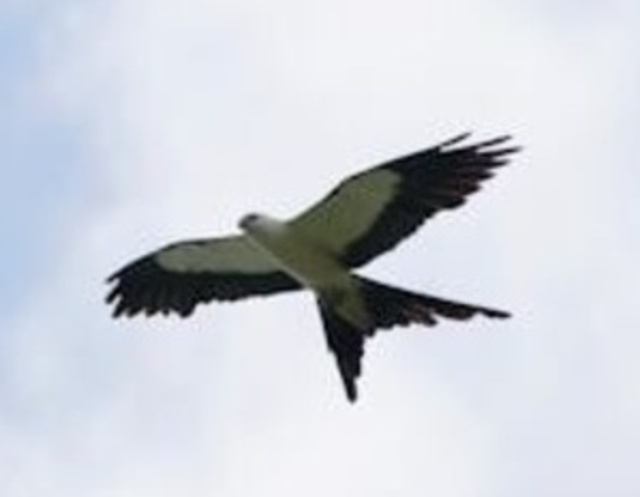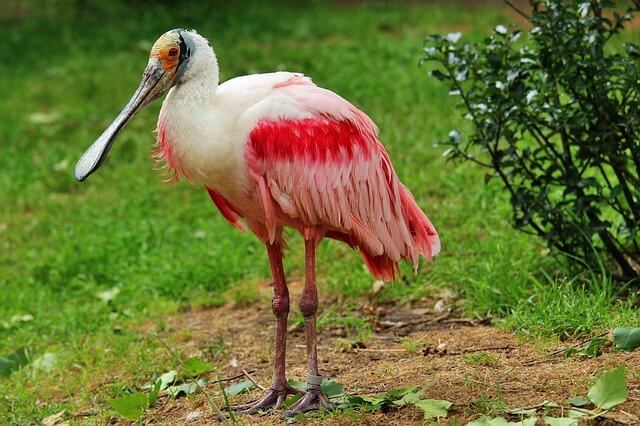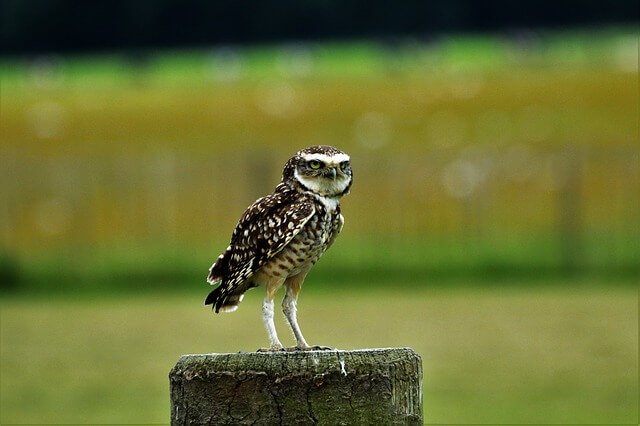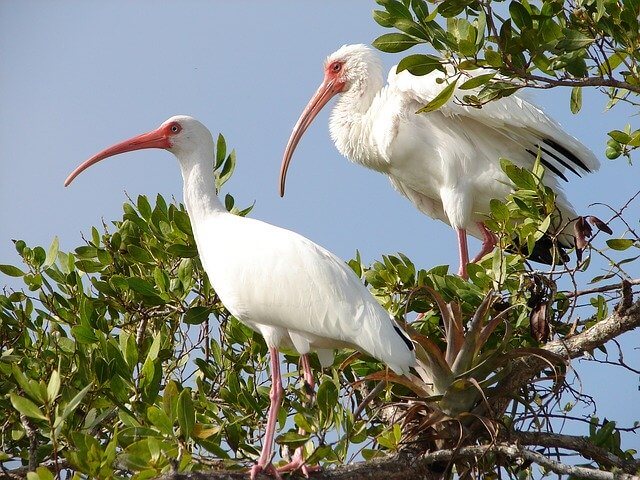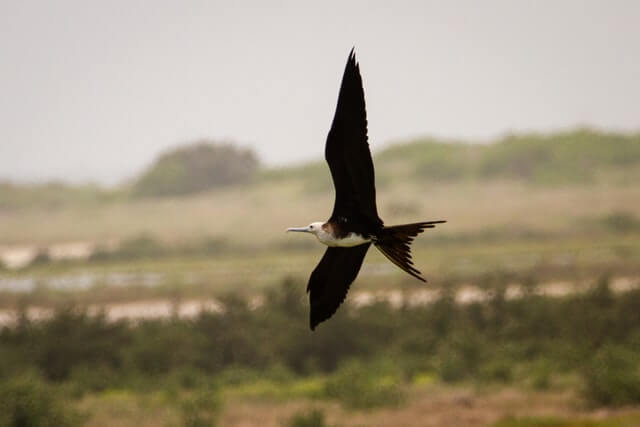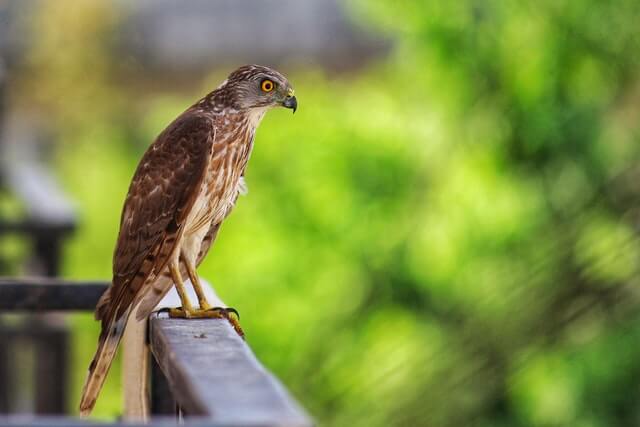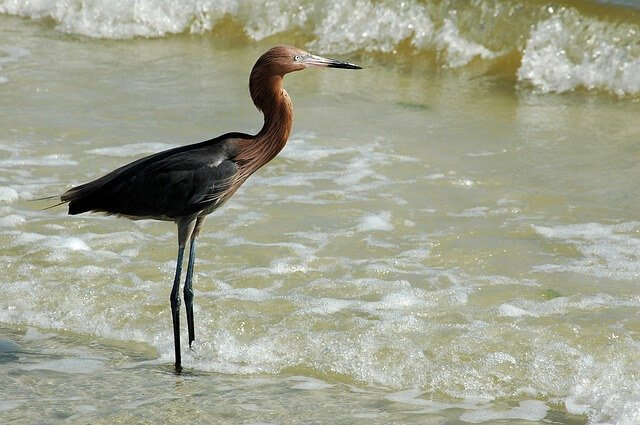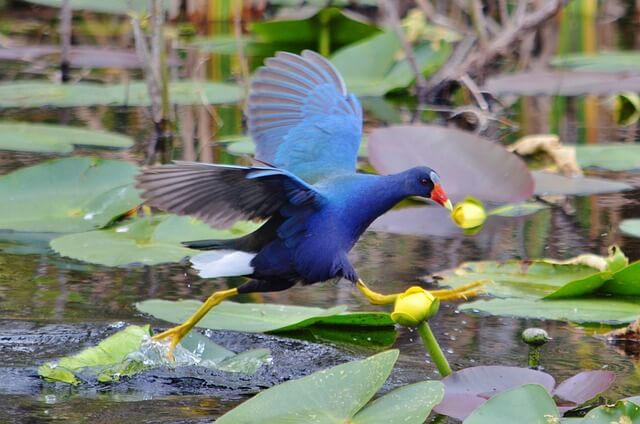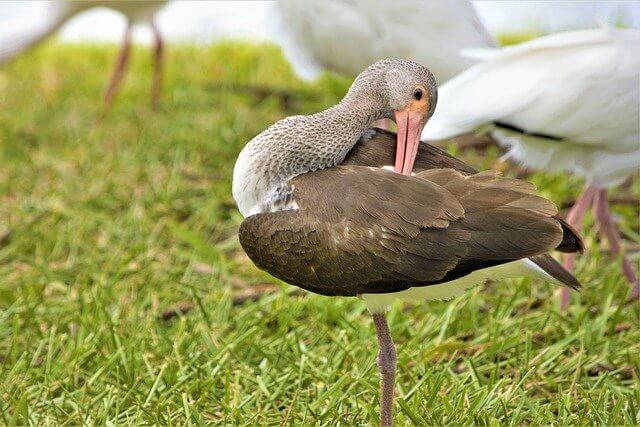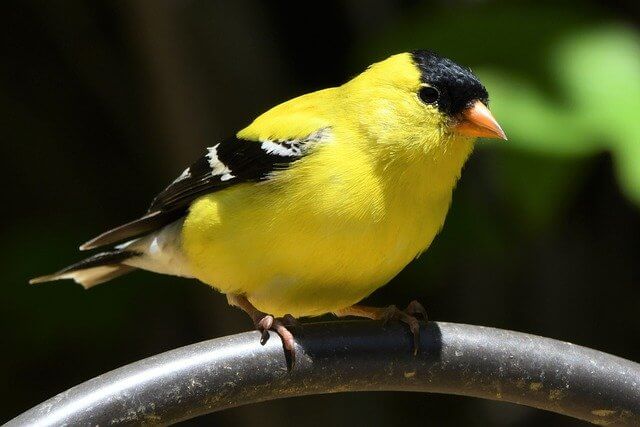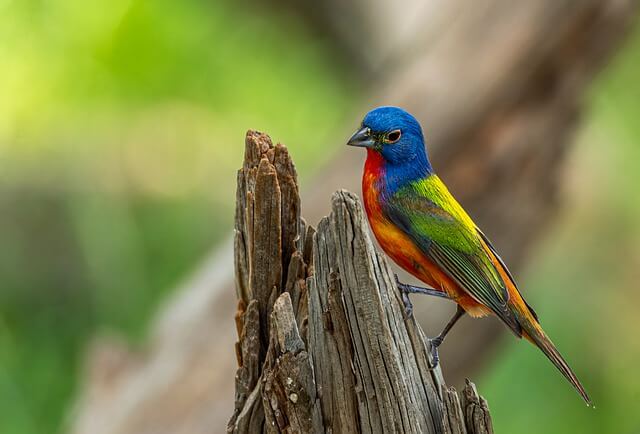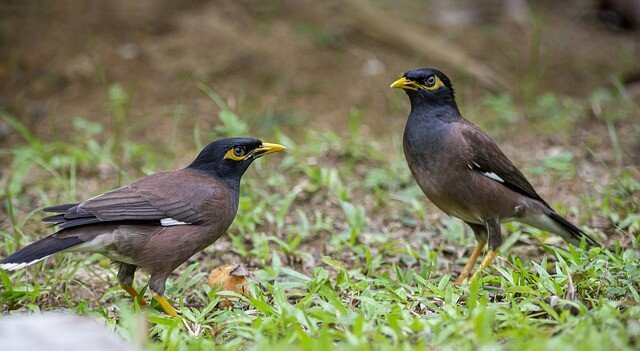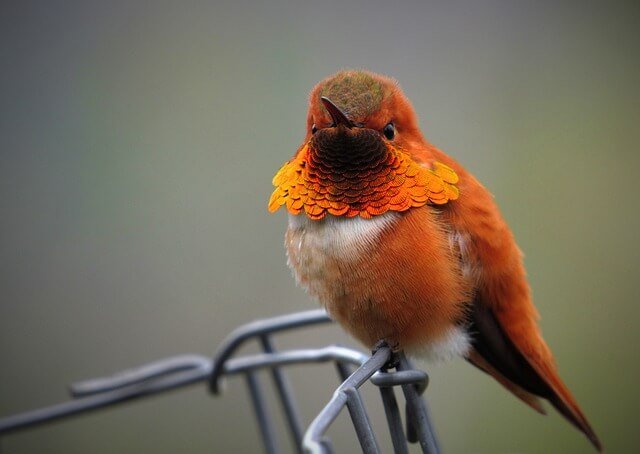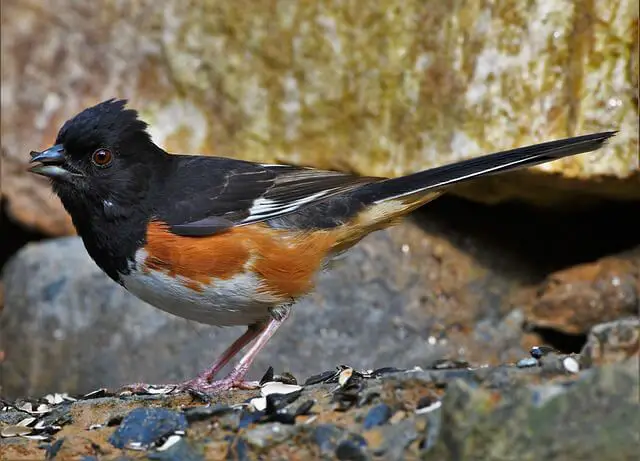Florida is a birdwatcher’s dream! Whether you’re strolling along the coast, kayaking through the Everglades, or simply watching your backyard feeder, there’s always a chance to spot something incredible.
From the striking Roseate Spoonbill to the powerful Bald Eagle, the birds of Florida are as diverse as the landscapes they call home. In this article, we’ll look at some of the most fascinating species you can find and the best places to see them.
Click the Play button below to listen to our podcast:
Table of Contents
- 1 Most Common Birds of Florida
- 1.1 Black-bellied Whistling-Duck
- 1.2 Florida Scrub Jay
- 1.3 Wood Stork
- 1.4 Anhinga
- 1.5 Greater Flamingos
- 1.6 Swallow Tailed Kite
- 1.7 Roseate Spoonbill
- 1.8 Burrowing Owl
- 1.9 White Ibis
- 1.10 Magnificent Frigatebird
- 1.11 Short-tailed Hawk
- 1.12 Reddish Egret
- 1.13 Purple Gallinule
- 1.14 Limpkin
- 1.15 White-Crowned Pigeon
- 1.16 American Goldfinch
- 1.17 Painted Bunting
- 1.18 Common Myna
- 1.19 Rufous Hummingbird
- 1.20 Eastern Towhee
- 1.21 Smooth-Billed Ani
- 1.22 Blue Grosbeak
- 1.23 Belted Kingfisher
- 2 Frequently Asked Questions
- 3 Author
Most Common Birds of Florida
Black-bellied Whistling-Duck
- Length: 19-22″ in. (47-56 cm)
- Weight: 1.5-2.2 lbs. (650-1015 g)
- Wingspan: 30-38 in (76.2-96.6 cm)
- Maps: Range Map – Sightings Map
- Sounds: Calls and Sounds
The Black-bellied Whistling-Duck is a native species of Florida. It can be found in the panhandle and parts of central Florida, and is not common anywhere else in the United States. They live in coastal regions of the state and prefer freshwater habitats, but can also be found around brackish water estuaries and mangrove swamps.
Black-bellied Whistling-Ducks are omnivores, eating plants, fish, mollusks, and other aquatic invertebrates like shrimp. They are also migratory birds with a range from southern Canada to Mexico.
Related: 23 Fun Facts About Ducks in 2022 (with Photos, ID & Info)
Florida Scrub Jay
- Length: 9.1-11.0 in (23-28 cm)
- Weight: 2.3-3.3 oz (66-92 g)
- Wingspan: 13.0-14.2 in (33-36 cm)
- Maps: Range Map – Sightings Map
- Sounds: Calls and Sounds
Florida’s scrub-jay is a small, beautiful, and intelligent bird that inhabits the southeast region of Florida. They are mostly found near water sources and feed on small mammals and insects. The scrub-jay can be seen year-round in the state, but it migrates to different areas during the winter months.
It is most commonly seen on the coast from April through November, but it moves inland as far as 100 miles during winter. It prefers habitats with lowland forests or pine woods, live oak hammocks, and mangrove swamps.
Wood Stork
- Length: 33.5-45.3 in (85-115 cm)
- Weight: 72.3-93.1 oz (2050-2640 g)
- Wingspan: 59.1-68.9 in (150-175 cm)
- Maps: Range Map – Sightings Map
- Sounds: Calls and Sounds
Wood storks are found in Florida, but their range is larger than just the state. They have been spotted as far north as Maine and west to Louisiana. The wood stork is a large bird that weighs around 5 pounds. The wingspan can be up to 6 feet long, with the tail making up an additional 2 feet of length.
Wood Storks typically eat fish, crabs, shrimp, frogs, snakes, and even rodents like rats and mice for food sources during the breeding season (March-July). It breeds in southern Florida and winters south to Central America or northern South America. The nest is built on trees over water.
Anhinga
- Length: 29.5-37.4 in (75-95 cm)
- Weight: 46.7-47.6 oz (1325-1350 g)
- Wingspan: 43.3 in (110 cm)
- Maps: Range Map – Sightings Map
- Sounds: Calls and Sounds
The Anhinga is a bird that can be found in freshwater wetlands and coastal habitats, as well as saltwater estuaries. In the southern states, they are often found near swamps or other coastal marshes while further north they are found more inland on lakes and rivers. They can be observed year-round but during migration seasons (April-October) their numbers will increase.
It prefers to live near water but can also be seen on dry land where it builds its nest. Anhingas eat fish, frogs, crustaceans, and small animals such as turtles or rodents. They are opportunistic feeders meaning they will eat whatever they come across even if the prey item isn’t their preferred food type.
Greater Flamingos
Length: 42-60 in (110-150 cm)
Weight: 4.5–9.0 lbs. (2.1-4.1 kg)
Wingspan: 55-65 in (140-165 cm)
Maps: Range Map – Sightings Map
Sounds: Calls and Sounds
The Greater Flamingo is the largest species of flamingo. It lives in various habitats in Florida such as mangrove swamps, mudflats, and estuaries that are rich in food. The Greater Flamingo has a very long neck, which it uses to feed on shallow water. The Greater Flamingos’ migration patterns vary depending on their habitat location.
In winter, they migrate to other areas with more favorable conditions or move into wetter areas for feeding purposes. The flamingo’s range is all over the world, but they mostly live in Africa, Southern Asia, Florida, Cuba, South America, Australia, and New Zealand as well as some islands in the Pacific Ocean like the Galápagos Islands.
Related: 25 Facts About Flamingos That Will Blow Your Mind!
Swallow Tailed Kite
- Length: 19.7-25.2 in (50-64 cm)
- Weight: 13.1-21.2 oz (370-600 g)
- Wingspan: 48.0 in (122 cm)
- Maps: Range Map – Sightings Map
- Sounds: Calls and Sounds
Swallow-tailed kites are migratory birds of prey with a wingspan up to 4 feet (1.2 meters). They can be found throughout the Western Hemisphere in Central America, South America, and North America. The range of this bird includes Guatemala to Mexico in the south and as far north as Canada’s Northwest Territories.
The Swallow-tailed Kites range is in the Americas, primarily North America. They live mainly in arid habitats with scattered trees and shrubs, grasslands, savannas, and agricultural land. Their diet consists of large insects such as grasshoppers, crickets and beetles; they also eat small reptiles like lizards or snakes.
Roseate Spoonbill
- Length: 27.9-33.9 in (71-86 cm)
- Weight: 42.3-63.5 oz (1200-1800 g)
- Wingspan: 47.2-51.2 in (120-130 cm)
- Maps: Range Map – Sightings Map
- Sounds: Calls and Sounds
The Roseate Spoonbill is a large, pink bird with a large, spoon-shaped bill. They live in the Southern United States and have been spotted as far north as Maine. It lives in the Gulf Coast region from Mexico to the Atlantic coast. The Roseate Spoonbill’s habitat consists mainly of freshwater ponds or saltwater marshes that are usually surrounded by dense vegetation such as cattails or reeds to provide cover from predators.
They are often found on small islands off of the shoreline where they feed on crabs, clams, snails, and other invertebrates found there. Roseate Spoonbills live in groups called colonies with up to 200 members.
Burrowing Owl
- Length: 7.5-9.8 in (19-25 cm)
- Weight: 5.3 oz (150 g)
- Wingspan: 21.6 in (55 cm)
- Maps: Range Map – Sightings Map
- Sounds: Calls and Sounds
The Burrowing Owl is a small nocturnal bird that is native to North America. It’s one of the most common owls in the Western Hemisphere and can be found throughout much of North America, Central America, and parts of South America. The burrowing owl’s range includes prairies, deserts, farmlands, savannas, and forests from Southern Canada through Mexico to northern Argentina.
It nests in prairie dog burrows or abandoned rabbit holes, but has also been known to use artificial burrows as well. The Burrowing Owl eats small mammals, reptiles, amphibians, insects, and other invertebrates as well as bird’s eggs.
Related: Really Cool Burrowing Owl Facts That Will Amaze You!
White Ibis
Length: 21-28 in (53-70 cm)
Weight: 1.9-2.8 lbs (30.4-44.8 oz)
Wingspan: 35-41 in (90-105 cm)
Maps: Range Map – Sightings Map
Sounds: Calls and Sounds
The White Ibis is a type of bird that migrates and is also found in many habitats. They are seen all over the world, but their natural habitat is mainly found in Florida, Louisiana, Texas, and Mexico. In their summer habitat, they can be found nesting along freshwater rivers, lakes, or ponds
They are omnivores feeding on fish eggs, insects, crustaceans, mollusks beetles, spiders, crickets, and tadpoles. They are an opportunistic feeder which means they will take what’s available when needed.
Magnificent Frigatebird
- Length: 35.0-44.9 in (89-114 cm)
- Weight: 35.3-67.0 oz (1000-1900 g)
- Wingspan: 85.4-88.2 in (217-224 cm)
- Maps: Range Map – Sightings Map
- Sounds: Calls and Sounds
The Magnificent Frigatebird is a large, seabird that can be found in tropical waters around the world. and lives in a large area stretching from Alaska to South America. They are mainly found on tropical islands, coral atolls, seagrass beds, and mangrove swamps.
Their diet consists mostly of fish but they also eat squid, crustaceans, and even carrion. Their feathers are waterproofed with oils from the preen gland that protects them against rain and sea spray. They will migrate seasonally and are even capable of crossing the equator.
Short-tailed Hawk
- Length: 15.3-17.3 in (39-44 cm)
- Weight: 13.6-16.9 oz (385-480 g)
- Wingspan: 32.7-40.5 in (83-103 cm)
- Maps: Range Map – Sightings Map
- Sounds: Calls and Sounds
The Short-Tailed Hawk is a migratory bird of prey that lives in North America. The birds’ range covers the continental United States, with some exceptions like the Eastern Coast and Central Plains. These hawks can be found in many habitats such as forests, grasslands, shrublands, and wetlands.
These hawks are predators who hunt small mammals and sometimes other birds such as songbirds or waterfowl. They also feed on carrion from animals that have died.
Related: 32 Fun Facts About Hawks (with Photos & Details)
Reddish Egret
- Length: 27.6-31.5 in (70-80 cm)
- Weight: 24.7-30.0 oz (700-850 g)
- Wingspan: 45.3-46.5 in (115-118 cm)
- Maps: Range Map – Sightings Map
- Sounds: Calls and Sounds
The Reddish Egret is a bird that can be found in marshy wetlands and coastal areas. They are most often seen on the coast of Florida, Southern Georgia, Louisiana, Mississippi, Texas, and northern Mexico as well as inland swamps and freshwater lakes. Its range includes the east coast of North America and Central America.
The diet of this species consists mainly of fish, frogs, insects, crustaceans and mollusks that they find in shallow water while stalking or probing with their bill. It is one of few herons to hunt during the daytime instead of at night like most other herons do. Reddish Egrets are monogamous breeders which nest during April through September with peak nesting time occurring in June.
Purple Gallinule
- Length: 13.0-14.6 in (33-37 cm)
- Weight: 7.2-10.3 oz (203-291 g)
- Wingspan: 21.6-22.1 in (55-56 cm)
- Maps: Range Map – Sightings Map
- Sounds: Calls and Sounds
Purple Gallinules inhabit the eastern coast of North America, with their range extending from southern Canada to northern Florida. They inhabit wetlands and marshes of various sizes, but seem to prefer smaller ones with abundant emergent vegetation.
Purple Gallinules are omnivores and eat everything from worms to crustaceans to fish near the water’s surface. They also feed on insects such as dragonflies, damselflies, butterflies, moths and beetles; as well as fruits like figs, berries. Purple gallinules are migratory birds that breed from April to June in Florida.
Limpkin
- Length: 25.0-28.7 in (63.5-72.9 cm)
- Weight: 37.0-48.3 oz (1050-1370 g)
- Wingspan: 39.8-42.1 in (101-107 cm)
- Maps: Range Map – Sightings Map
- Sounds: Calls and Sounds
The Limpkin is a large bird found in the Southern United States. The range of this bird extends from Virginia to Texas and Louisiana, as well as through Mexico, Central America, and the Caribbean. It lives in freshwater wetlands, coastal marshes, and mangrove swamps.
They feed on small fish, insects, crustaceans, worms and snails they find by probing the mud or shallow water with their long bill that has a sensitive tip for feeling prey. Limpkins live year round in Florida and migrate north during winter to breed. They lay their eggs on tree branches or other elevated places, so they can avoid predation by snakes.
White-Crowned Pigeon
- Length: 13.0-13.8 in (33-35 cm)
- Weight: 7.8-9.9 oz (220-280 g)
- Wingspan: 23.2 in (59 cm)
- Maps: Range Map – Sightings Map
- Sounds: Calls and Sounds
White-crowned pigeons are native to North America. They live in the United States and Canada, but can also be found in Mexico and Central America. White-crowned pigeons are most often seen at a height of 50 feet or more above ground level. The white-crowned pigeon prefers habitats of woodlands, forest edges, streamsides, orchards, parks and suburban gardens with trees or shrubs.
Their diet consists mainly of seeds, nuts, fruits and berries, but they will also eat insects when available. They range over a large area during migration season, but their breeding range is limited to Northern North America and Southern Central America.
American Goldfinch
- Length: 4.3-5.1 in (11-13 cm)
- Weight: 0.4-0.7 oz (11-20 g)
- Wingspan: 7.5-8.7 in (19-22 cm)
- Maps: Range Map – Sightings Map
- Sounds: Calls and Sounds
The American Goldfinch is a common bird found in North America. The species ranges from Alaska to Newfoundland and south through the United States, Mexico, Central America, Colombia and Venezuela. The goldfinches inhabit open woodlands, prairies, fields and meadows, or agricultural areas where they eat seeds from weeds, grasses, cereal crops such as wheat and oats; fruit including juniper berries; some insects like ants, mosquitoes or spiders.
They often feed on the ground, but will perch in trees or shrubs when eating. In winter, they migrate southward to Mexico for warmer weather, and food sources like oranges and pine nuts.
Related: Interesting American Goldfinch Facts You Need to Know!
Painted Bunting
Length: 4.7–5.5 in (12-14 cm)
Weight: 0.5–0.7oz (13-19 g)
Wingspan: 8.3–9.1 in (21-23 cm)
Maps: Range Map – Sightings Map
Sounds: Calls and Sounds
The Painted Bunting is a small bird that lives in the United States and Canada. It’s primarily found in the eastern parts of North America, from southern Canada to Florida. This species has been known to inhabit such areas as coastal dunes and marshes, but can also be seen living in pine forests or weedy fields.
They are primarily insectivores with their diet consisting of flies, spiders, beetles and caterpillars. The Painted Bunting breeds in the south during winter months, then migrates northward where they spend summer breeding season before returning to their original location.
Common Myna
Length: 8.7-9.0 in (22.1-22.9 cm)
Weight: 3.8-4.9 oz (109-138 g)
Wingspan: 17.5-18 in (44.5-45.7 cm)
Maps: Range Map – Sightings Map
Sounds: Calls and Sounds
The Common Myna is a member of the starling family. The species was first documented in 1758 by naturalist Carl Linnaeus. It has since spread across Asia, Australasia and North Africa to Europe, parts of North America and South America where it is regarded as an invasive species.
The common myna can be found in any environment that provides open space for nesting and perching with trees or tall shrubs nearby; however, they prefer urban areas to forests or wetlands. The diet of this myna includes anything from fruits and vegetables to garbage and animal carcasses. It migrates short distances seasonally depending on the climate.
Rufous Hummingbird
- Length: 2.8-3.5 in (7-9 cm)
- Weight: 0.1-0.2 oz (2-5 g)
- Wingspan: 4.3 in (11 cm)
- Maps: Range Map – Sightings Map
- Sounds: Calls and Sounds
Rufous hummingbirds live in North America and Central America, as well as South America. They live in the southwest United States of Arizona, California, Colorado, Nevada and New Mexico; the northern Mexican states of Sonora, and Chihuahua; southernmost Texas to Nicaragua; much of Guatemala, El Salvador, Honduras with a few found further east into Panama.
Their habitat includes many types of habitats, including arid deserts, woodland edges, or meadows to moist tropical forests. The diet of the Rufous Hummingbird consists mainly of nectar from flowers, but they also eat insects such as mosquitoes or flies when there are no flowers available.
Related: 31 Flowers That Attract Hummingbirds (Photos, ID & Info!)
Eastern Towhee
- Length: 6.8-8.2 in (17.3-20.8 cm)
- Weight: 1.1-1.8 oz (32-52 g)
- Wingspan: 7.9-11.0 in (20-28 cm)
- Maps: Range Map – Sightings Map
- Sounds: Calls and Sounds
The Eastern Towhee is a member of the order Passeriformes, which includes all perching birds. It prefers areas with moist soils such as marshes, pastures, hayfields and agricultural fields; however it will also occupy brushy scrubland in arid regions, and can also be seen in urban or suburban areas throughout eastern North America as well as parts of Central America.
The Eastern Towhee’s diet consists of insects, seeds and berries, but their main food source is caterpillars. In the winter months they migrate to warmer climates such as Mexico and Florida where they will find shelter for the cold weather.
Related: How to Attract Towhee to your Backyard? Expert Tips!
Smooth-Billed Ani
Length: 13-14.2 in (33-36 cm)
Weight: 3.4-4.2 oz (95-119 g)
Wingspan: 16.9-17.7 in (43-45 cm)
Maps: Range Map – Sightings Map
Sounds: Calls and Sounds
The Smooth-billed Ani, is a bird species that resides in North America. Their range includes Florida, Louisiana, Alabama, Mississippi and Georgia; however they are mostly concentrated in South Carolina. It inhabits forested areas near rivers, wetlands pastures, grasslands and savannas with trees or shrubs nearby for roosting during the day.
The birds are omnivores with an insect diet and will occasionally feed on fruit or berries. These birds are migratory, meaning they travel south for the winter months to avoid colder temperatures. They have a social hierarchy of one male with several females which lay eggs in tree cavities lined with leaves and mosses for incubation.
Blue Grosbeak
- Length: 5.9-6.3 in (15-16 cm)
- Weight: 0.9-1.1 oz (26-31 g)
- Wingspan: 11.0 in (28 cm)
- Maps: Range Map – Sightings Map
- Sounds: Calls and Sounds
The Blue Grosbeak is a type of bird found in North America. It has been spotted in Canada, the United States and Mexico. They migrate during the winter to Mexico or Central America and then come back north again for breeding season. They are mainly found near water sources like lakes, rivers and streams or marshes with thick vegetation such as cattails.
Blue Grosbeaks feed on seeds from plants like thistles, goldenrod and others types of weed that grow near bodies of water. They also eat insects such as beetles, caterpillars, spiders, and grasshoppers, which they will find hopping around.
Related: 16 Blue Grosbeak Interesting Facts (Photos, ID & Details)
Belted Kingfisher
- Length: 11.0-13.8 in (28-35 cm)
- Weight: 4.9-6.0 oz (140-170 g)
- Wingspan: 18.9-22.8 in (48-58 cm)
- Maps: Range Map – Sightings Map
- Sounds: Calls and Sounds
Belted Kingfishers are found in North America, Central America and South America. Belted Kingfishers can be seen year-round throughout the southeastern United States, but during winter they migrate to more southern areas of the US such as Florida, Louisiana and Texas.
The belted kingfisher’s diet consists mainly of fish, which it catches by diving into water from a perch on land or in trees near water. They are mainly found near lakes, ponds, rivers and streams where they prey on fish such as minnows and small catfish as well as other aquatic creatures like crayfish or frogs.
Newly Added Birds (Updated)
- Northern Cardinal
- Mourning Dove
- Red-bellied Woodpecker
- Northern Mockingbird
- Blue Jay
- Carolina Wren
- Red-shouldered Hawk
- Boat-tailed Grackle
- Blue-gray Gnatcatcher
- Black Vulture
- Common Grackle
- Red-winged Blackbird
- Gray Catbird
- Yellow-rumped Warbler
- Laughing Gull
- Tufted Titmouse
- Downy Woodpecker
- American Crow
- Pileated Woodpecker
- Eastern Phoebe
- Eastern Bluebird
- Carolina Chickadee
- European Starling
- American Robin
- Tree Swallow
- House Wren
- House Finch
- American Kestrel
- Loggerhead Shrike
Frequently Asked Questions
What birds are common in Florida?
The five most common birds in Florida are the Northern Cardinal (47.82% Frequency), Mourning Dove (43.03% Frequency), Red-bellied Woodpecker (42.24% Frequency), Northern Mockingbird (39.43% Frequency) and the Blue Jay (35.66% Frequency).
What are the brown birds in Florida called?
Limpkin is the most common brown birds in Florida. They have a long, down-curved bill and legs that are set far back on their body. Their habitat ranges from marshes to saltwater flats, and even mangrove swamps. They prefer standing water that is seasonally flooded or has been drained for agricultural purposes.
What are the tiny birds in Florida?
The tiny birds that are most common in Florida are either Rufous hummingbirds or Least Flycatchers. The two types of birds have different appearances and behaviors, but they both live on the coastlines and beaches of Florida. They eat insects, spiders, fruit flies, flower nectar, seeds from trees like Magnolia trees and red mangroves.
What large birds live in Florida?
There are many large birds in Florida. The largest of these is the great blue heron, which can be found all over the state. Other large birds include Ibises, Cranes, Pelicans, Wood Storks, Anhingas, Brown Pelicans, and Ospreys.
What is the name of the Florida bird?
The Northern Mockingbird is the state bird of Florida. Its range includes Florida, and it can be found in the lower half of Alabama and Mississippi, throughout Louisiana, Arkansas, Oklahoma, Tennessee and Texas. It is mainly found in woodlands and swamps with trees or shrubs near water.
Do Cardinals live in Florida?
Northern cardinals are a common sight in many parts of the United States. In winter, they live as far south as North Carolina and Kentucky. They can be found living year-round throughout most of Florida and southern Georgia, but they usually only spend the summer in these areas.
Related Post: Best Bird Feeder For South Florida (Top Picks for 2022)

